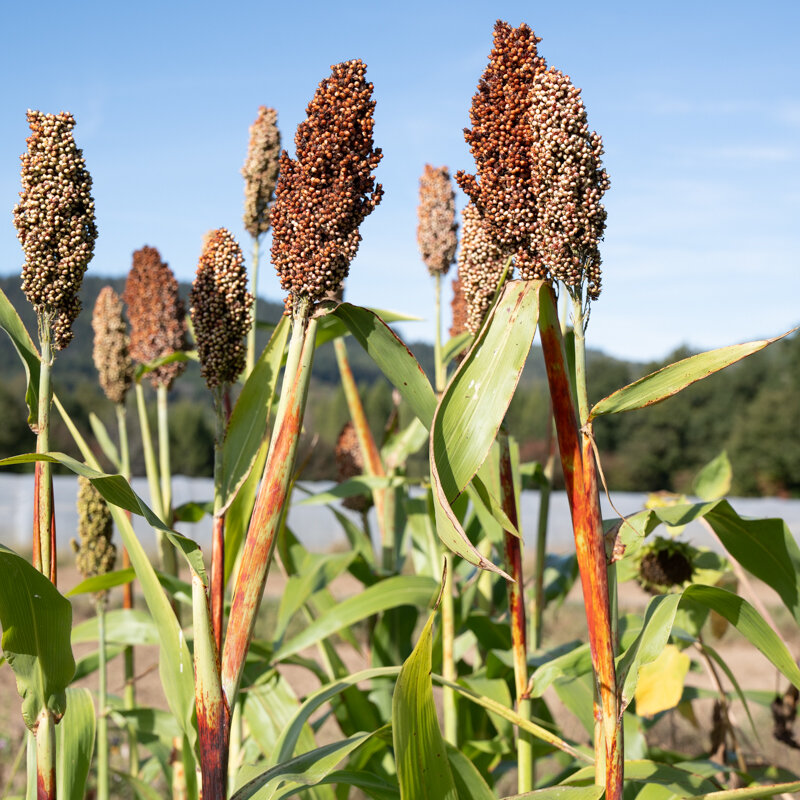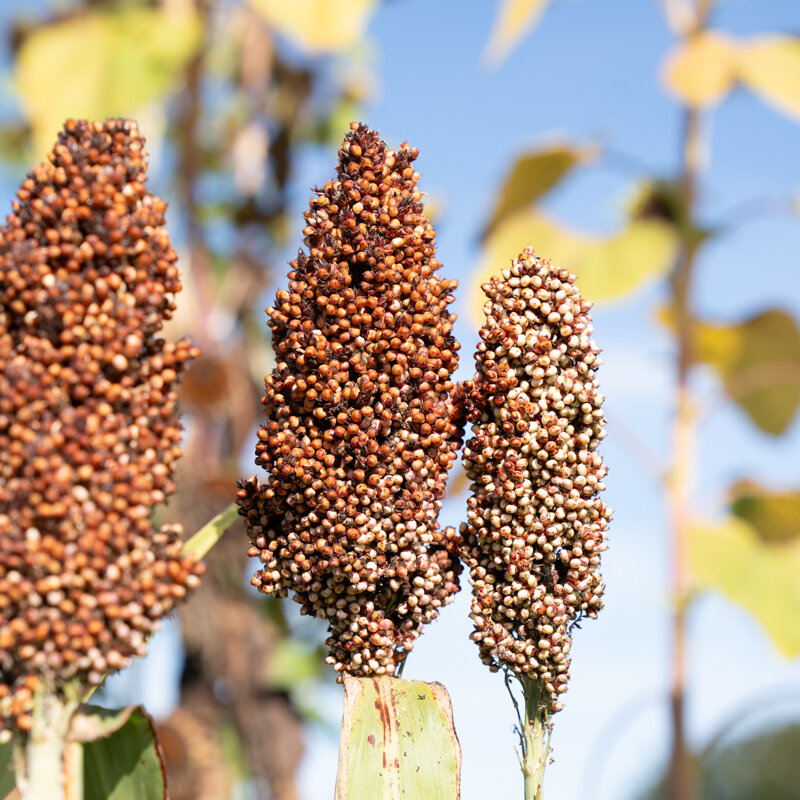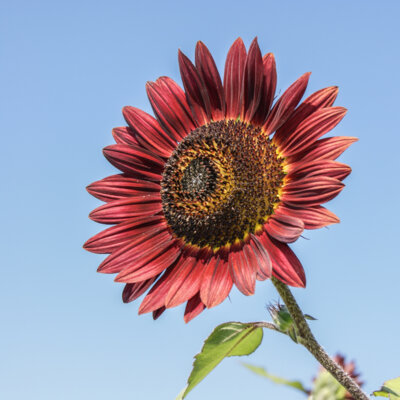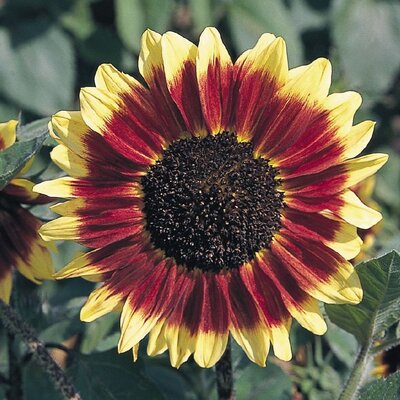Mennonite - Sorghum
This variety, over 2 m tall, produces thick, vigorous stems that don't wilt. They produce beautiful panicles rich in orange-red, partially shelled grains.
The leaf sheaths of Sorghum bicolor, rich in anthocyanin, are used as a natural red dye. This use is widespread in Africa.
These products may also be of interest to you
in the ground
Sow light-colored, directly in place, in well-warmed soil, in rows 60 cm apart. Cover with 2 cm of fine soil. After emergence, thin out to leave one plant every 30 cm.
Sorghum needs a lot of heat to ripen.
April
April, May, June
August, September, October
in the ground
sunny
low
clayey, limestone, humus, sandy
reheated, sec
Sorghum bicolor
mid-season
20 grams
Orange
From 150 to 200 cm
Switzerland
1794
Methodus Plantas Horti Botanici et Agri Marburgensis : a staminum situ describendi
This ancient variety originates from the Mennonite group. The species Sorghum bicolor was described by the German botanist Moench, and published in 1794 in Methodus Plantas Horti Botanici et Agri Marburgensis: a staminum situ describendi.
Moench















